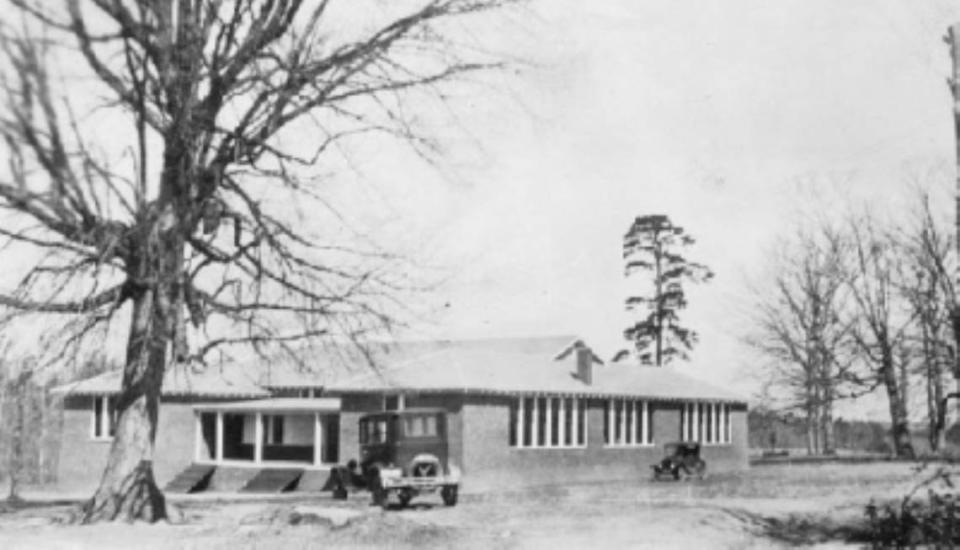Fort Mill leaders plan to honor site, memory and impact of segregation-era school
Fort Mill schools garner plenty of attention. Now, town and school officials want to honor a school that hasn’t held class for decades, but one with lasting impact.
The George Fish School sat on Steele Street in the Paradise community. It served Black students in Fort Mill from 1926 to 1968.
When schools were no longer segregated by race, it became Fort Mill Junior High. That building no longer exists.

The school bore the name of George Fish, a former Springs Cotton Mills superintendent who advocated for the school’s construction.
School, town and Fort Mill History Museum officials have events planned Sunday and Monday that include a ribbon cutting and historical marker dedication at the former school site, a screening of a documentary on the school, and a panel discussion with a book signing.
John Sanders III, former president of the George Fish School Alumni Monument Committee, said the new marker stands where the school once did.
“This historical marker will ensure that the history of George Fish School, Julius Rosenwald, Booker T. Washington and our great teachers, staff and students will be accessible to all,” Sanders said.
George Fish School was a Rosenwald school, named for philanthropist Julius Rosenwald who with Booker T. Washington built schools for Black children across the South.
“It is a precious treasure for the George Fish Historical Marker to be erected on the grounds where this life changing institution once stood,” said David Ward, Fort Mill History Museum chairman. “George Fish School was a vital component of this community by providing one of life’s most important resources, quality education.”
Chuck Epps, Fort Mill School District superintendent, said the George Fish School has a rich history in the area and was an important part of the community’s educational experience.
“The school served as the center of the Paradise neighborhood in educational, athletic and social activities and was the pulse of the Black community during that time,” Epps said. “More importantly, the impact of the school’s role in developing and preparing generations of students for the future is impossible to measure.”
The former 10-acre school site became a Duke Energy facility.
County land records show Elliott Springs — who led the Springs mills for decades in Fort Mill and was father to the late Anne Springs Close — owned the land through 1925 before the school district acquired it.
In fewer than 30 years, Fort Mill went from a town with one school each at the primary, elementary, middle and high school levels to a district with 20 schools. The district now has three high schools and recently added a sixth elementary school. Already early plans have begun toward yet more elementary and middle schools.
Two firms will decide look for Fort Mill School District’s new elementary, middle schools
While young students today wouldn’t understand the era of school segregation the way former George Fish students do, they are a product of decades spent working to improve area schools.
Recent elementary and middle school test scores showed Fort Mill students overall performed best in the state in 11 of 14 rankings by grade a subject.
Those numbers include the seven times Black students in Fort Mill scored better than Black students in any other district statewide. They did so in sixth grade science, seventh and eighth grade math and language arts, plus third and fourth grade language arts. Students ranked almost entirely within the top five districts for each grade and subject tested.
For organizers of the coming events, the George Fish School isn’t just a history lesson. It’s an ongoing story.
“For many of the students, the education and encouragement obtained from this school were key foundational elements for their success,” Ward said. “The legacy of this school is noted on this marker and flourishes in the lives of the George Fish Alumni as they continue telling this remarkable part of history to family, friends and the community.”
Want to go?
The lineup of events to celebrate the George Fish School include:
▪ A 2 p.m. screening Sunday of a documentary on the school, followed by a 3:15 p.m. panel discussion and book signing. Both events are at the Fort Mill School District office at 2233 Deerfield Dr., Fort Mill. Springs Close Family Archives archivist and curator Ann Evans will moderate.
Participants include Sanders and Ward, history museum director Christia Humburg, George Fish alum Cora Dunlap Lyles, historian Haley Milner, documentarian Rebecca Studer and “You Need a Schoolhouse: Booker T. Washington, Julius Rosenwald and the Building of Schools for the Segregated South” author Stephanie Deutsch.
▪ A 10 a.m. Monday historical marker celebration at the school district office. Moderator will be George Fish alum and physician Constance Dunlap. Participants include current and past mayors Guynn Savage and Danny Funderburk respectively, Epps and George Fish alumni Juanita Sanders, Sammie White Potts, Rudy Sanders and Elizabeth Patterson White.
▪ A noon Monday ribbon cutting and historical marker dedication at the former George Fish School site, 401 Steele St., Fort Mill. Epps will preside over the dedication.

